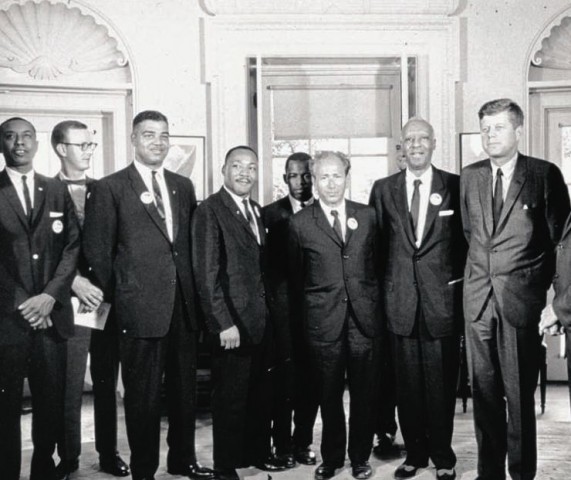By Hipolito Munoz, Managing Editor
“A picture is worth a thousand words,” what about the lack of a picture? How many words do you need to make the same point? In this MLK weekend, the film “Selma” not being included by the different guilds to be recognized is not a shame, it’s a reminder of who has the power to recognize and celebrate themselves for the world to see. If you want to find out who these folks are take a look at this piece at by the LA Times written in 2012, http://touch.latimes.com/#section/-1/article/p2p-82539611/. Here is some of the data they published: “the roster of all 5,765 voting members of the Academy of Motion Picture Arts and Sciences is a closely guarded secret.” It is telling how these folks feel about communities that do not represent them. It reminds us of how institutions and rules created by the members, is still being used by those that they do not consider equals. I would also venture to claim that those women and folks of color who are part of this elite and elitist group, had such a body of work, that there was no choice as to invite them to be part of the “Academy.” Here is another very uncomfortable statistic; “Oscar voters are nearly 94% Caucasian and 77% male, the Times found. Blacks are about 2% of the academy, and Latinos are less than 2%. Oscar voters have a median age of 62, the study showed. People younger than 50 constitute just 14% of the membership.” What other organizations you think would be accepted and celebrated for this membership make up. How can this happen in “liberal” Hollywood? May be this can help “Frank Pierson, a former academy president who won an Oscar for original screenplay for “Dog Day Afternoon” in 1976, said merit is the primary criterion for membership.” Take a look at his imdb information; http://www.imdb.com/name/nm0682757/, do you think his comment has power in the “industry?” And then we have the now well-known comments by the folks at Sony pictures. If they are making decisions about what films to finance and who to hire and these are internal decisions based on how they feel, what does the numbers above tell us? Here is a powerful question that is being thrown out there as folks keep pointing to Alejandro Gonzalez Inarritu’s Oscar nomination. Mr Inarritu is Mexican. He is not Latino. That does not diminish his talent and his work by any means, he is living the toughest of all American Dreams, but we need to know the difference. Do they have to change? Not as a matter of legality, but yes as a matter of relevance. What does this mean to a film and the artists? A ton of publicity, name recognition and may be perceived bankability.
The importance of transparency in social justice was very evident by the immediate strides apparently made by the “Academy” in order to rectify this concern. In an article for Yahoo News, there seem to be a change, not much, but something; “A 2012 survey by the Los Angeles Times found the academy was 94 percent white, overwhelmingly male and with a median age of 62. A more recent survey determined the percentage of older white males had dropped by one point, the Times said. But with nearly 7,000 members and no requirement to retire, diversity is going to take some time.” Cheryl Boone Isaacs, the first black president of the Academy of Motion Picture Arts and Sciences, is now overseeing and seems to be leading the charge to make a change in one of the most important cultural institutions in the world. We will see if she will be butting heads with Academy members that have the same feelings as Mr. Pierson. The former executive director of the Academy, Bruce Davies expressed his opinion is very telling on why he feels more folks of color have not been invited into this structure “The guilds are a democracy. If you have credits, nobody asks how good you were,” said Davis, the executive director from 1989 to 2011. “But the academy has to be different.” So different in the way it invites those that they feel are good enough? Under what criteria? To tell stories that resonate with the members, and again the question of demographics raises its hand. So in short stories about and with folks that do not look like them or resonate with their experience are not particularly important.
So what is next for those whose stories won’t get recognized? Well, get to your audience directly. Sadly, “Selma” is not getting the audience it deserves, and this reflects on a terrible dissonance between the excitement by films like “Vice” and “Selma.” I have taken it upon myself to encourage my students and fellow teachers/instructors to go watch it because it will whet their appetite to converse about a period of history that we need to be aware of and to search for stories of other ethnic groups, Asian-Americans, Middle-Eastern American whose stories are yet not being told, at all. Those that are not African American need to support this film because it will give us an entrance into a very real and very recent history that reflects what is happening around the world in many countries and in some places here in the US.








